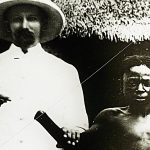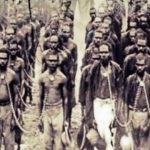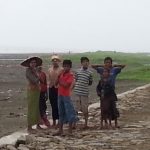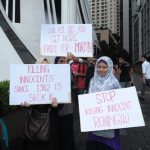The Attempted Genocide in Tasmania
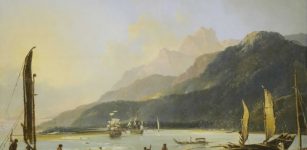
The British began their takeover of the island now referred to as Tasmania in 1803. At that time, there were already nine Indigenous nations present on the land. Indeed, the Aboriginal people had been living there for tens of thousands of years.
Each of the local nations was comprised of about six to fifteen separate groups, and, as a whole, the population of the island at the time has been estimated at between 6,000 and 15,000 people.
Criminally, by 1830, most of the Aboriginal population had been killed, as the colonisers attempted to carry out a genocide.
British expansion
In the early years, after their arrival from the colony of New South Wales, the invaders set up small outposts on the coast along the rivers that became known as the Derwent and the Tamar. Initially, they numbered just a few thousand.
But their population began to grow as the island became the primary British penal colony in the region. By the 1820s, the British began moving into the interior of what Europeans then called Van Diemen’s Land, and as they did, they began to further encroach on the lands of the local people.
Local resistance
The Tasmanian frontier war was fought primarily because an invading force was making a land grab, and trying to establish political control as they did so.
It was also the case that within the coloniser population, there were six times as many men as women, which led to the situation where many of these men kidnapped Indigenous women and force them into a life of physical and sexual servitude.
The Aboriginal population were fighting a war of resistance against an incoming invader, and they successfully utilised guerrilla tactics for many years. In 1824, there were 20 recorded Aboriginal attacks. By 1830, this figure had soared to 259.
As the British took over additional land, the situation became more desperate for the First Nations people, and they fought harder.
In turn, as the Aboriginal resistance became more intense, “so too did the frequency of revenge attacks and pre-emptive strikes by frontiersmen,” according to historian Nicholas Clements.
An iron fist
George Arthur was appointed governor of Van Diemen’s Land in 1824, and by all accounts, he was a hard taskmaster. The ruler of the colony once proclaimed, “Terror may have the effect which no proffered measures of conciliation have been capable of inducing.”
Under his rule, military posts were set up on the borders of British occupied territories, preventing Aboriginal people from entering. Arthur claimed this would prevent conflict between the two groups, after European shepherds had killed 30 Pennemukeer people.
On November 1 1829, the governor declared martial law against the Aboriginal people, allowing colonisers to kill the locals on sight. Arthur declared Indigenous people enemies of the king, and the state of martial law continued for three years.
Despite all of this, Arthur did acknowledge the need for a treaty between the Aboriginal nations and the British.
Australia remains the only Commonwealth country that has not established a treaty with its First Peoples. But discussions of treaty have recently begun between First Nations representatives and state governments in Victoria and South Australia.
Attempted genocide
In 1830, governor Arthur placed small proclamation boards on trees containing a pictogram that showed that Aboriginal people and Europeans were equal before the law, which is quite disturbing, as this was the same year that one of the most barbaric chapters in the history of colonisation in Australia was carried out.
The so-called Black Line was a six-week military offensive implemented by the governor.
Around 2,200 British soldiers and civilians formed lines across the British occupied territories and moved south, with the aim of killing Aboriginal people and driving them down towards the Tasman Peninsula.
The operation has been documented as a logistical failure – it’s recorded that two Aboriginal people were captured and two were killed.
But it did have the effect of persuading some of the remaining First Peoples still living in the occupied areas to surrender themselves, and be sent to Flinders Island.
The final solution
In 1832, an estimated 230 Aboriginal people who were still living within the occupied regions were promised a safe haven. However, they were actually transported to live at a settlement on the Flinders Island known as Wybalenna, meaning black man’s houses.
Under the guidance of evangelical humanitarian George Augustus Robinson, the Aboriginal people were supposed to set up a British-type community. But on this remote island, many of the people suffered from European introduced respiratory diseases and died.
The settlement was abandoned in 1847, and the remaining 40 Indigenous people were taken back to the Tasmanian mainland to a region named Oyster Cove. Among them was Truganini, who in 1976, was the last of the group to pass away.
After she died, the Palawa woman’s skeleton was shown on display in the Tasmanian Museum until 1947. A century after her death, she was finally cremated and her ashes scattered, which was what she had requested.
In 2002, some of her remains were also returned from England where they had been held at the Royal College of Surgeons.
Resilience in the face of tragedy
It is often reported that Truganini was the last Aboriginal person from Tasmania to have died. But that is simply not true. Whilst the British colonisers did attempt to wipe out the entire Aboriginal population, they were not successful.
The 2016 Census figures show that there were 23,572 Indigenous people in Tasmania when the data was collected. And this accounts for 4.6 percent of the overall population in the state.
According to the Tasmanian Aboriginal Historical Services, the Indigenous community today is mainly comprised of Lia Pootah and Palawa people.
The service puts the “myth of the Tasmanian Aboriginal extinction” down to the incorrect notion that those at Wybalenna were the last of the island’s original inhabitants.
Blood on the Crown
The idea that all of Tasmania’s First Nations people died at the hands of the invading Europeans – or from the diseases they brought with them – might be yet another objective of the colonialist project.
But it must be remembered that under the auspices of the Crown, a group of British subjects were determined to carry out the act of genocide. And it was the resilience and resistance of the local Aboriginal people that saw them fail



